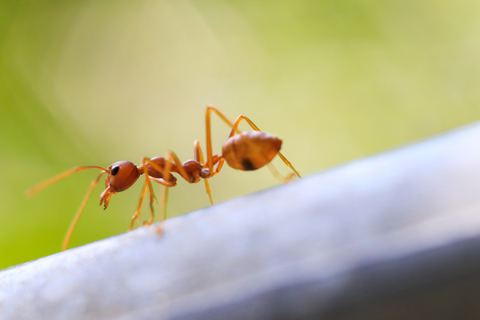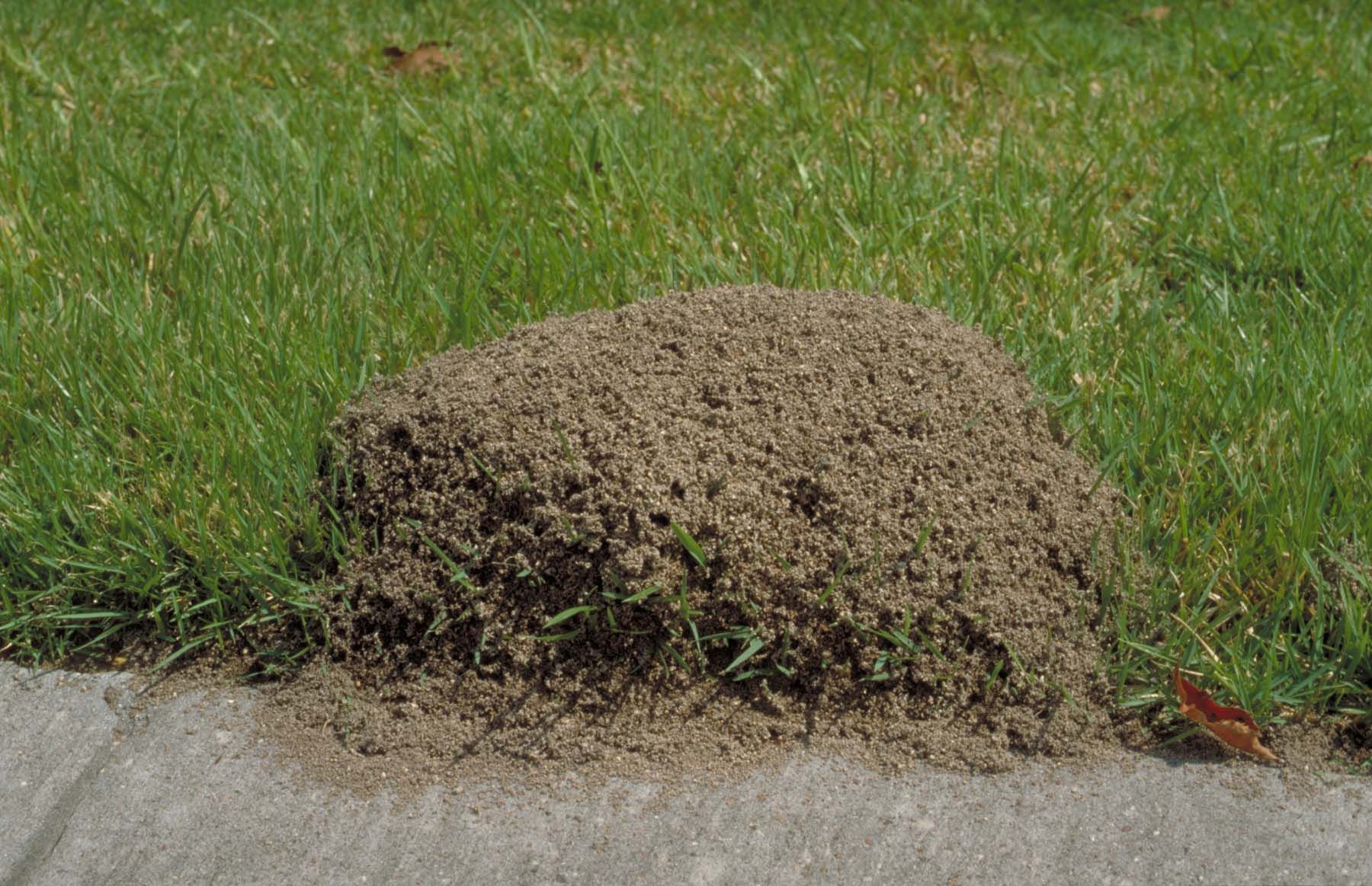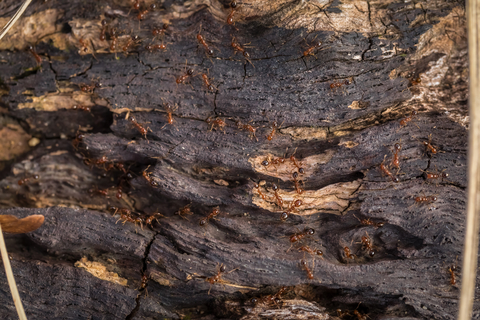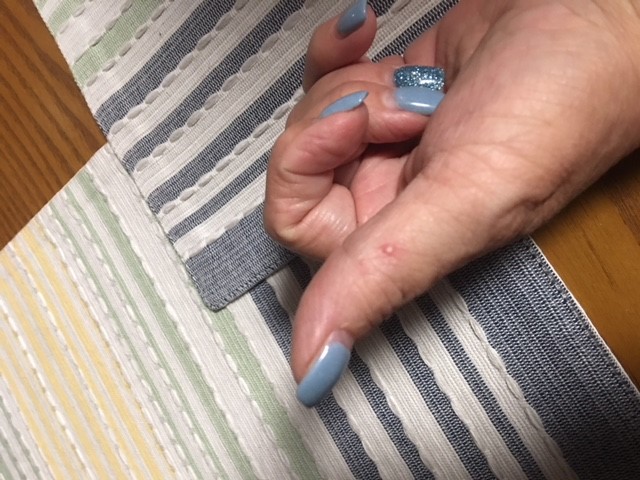Almost 250 years ago, on July 4th, the United States adopted the Declaration of Independence and set our country on its path for freedom. Since that time we have honored the historic day by gathering together and celebrating our community and our nation. And what better place to celebrate than outdoors, basking in the natural beauty, and enjoying all the joys our homes have to offer. So we head to our yards to play, swim, grill, and enjoy the holiday before the big show of fireworks lights up the night sky.
But while fireworks are an exciting addition to the festivities, there is another “fire” that can be lurking in your yard, capable of turning a beautiful day into a week of pain, itching, and general irritation; yes, we’re talking about fire ants. If you live in Texas there is a good chance you’ve seen these pests building their nests in lawns of all shapes and sizes, and almost an equally good chance that you’ve been on the wrong side of a fire ant encounter, having been stung and forced to deal with the pain and discomfort that follows. So before you deck out your lawn with flags and all things red, white, and blue for this year’s Independence Day Celebration, make sure you’ve declared your freedom from the misery and stress of fire ants.
Before you can wage war with the ants in your yard, you will want to know a bit more about them. Here are some of the things you will need to know in order to identify and eliminate this pest.
What Do Fire Ants Look Like?
In Texas, the fire ant variety you are likely to encounter are red imported fire ants. They are an average-sized ant, with worker ants ranging from 1/16” to 1/4” in length and are red and black in color, generally with a red head and thorax and a darker abdomen. These worker ants are the ones you will find foraging in your yard and crawling all over you if you happen to step on one of their nests; however, in the spring and summer you may also encounter fire ants with wings, also known as fire ant swarmers. Male and female swarmers will leave the nest when the weather is warm, often a day or two after a rainfall, mate, and then the females will shed their wings and begin constructing a new nest just about 1” to 2” under the soil surface wherein they will become the queen. The male ant swarmers, which are all black, will die after mating and are generally the ones you might see at your home’s entryways.
Where Do Fire Ants Live?
Fire ants live in colonies that can number up to 500,000 ants and tend to make their nests in open sunny areas. They are particularly fond of warmer weather and in the United States are predominantly seen in the south-central and southeastern states. Their nests are large dome-shaped mounds of soft soil that are generally no larger than 18” in diameter and show no distinct opening through which the fire ants enter. Due to their construction and choice of materials, fire ant mounds can sometimes be tricky to identify, especially if the mound is smaller or in an area without much grass. Keep an eye out for the distinctive mound shape and any areas of soil that have been disturbed, and give them a wide berth. Regardless of its ability to blend, the mound is the most important warning sign to watch out for when inspecting an area for these pests, and is also the most important thing to avoid if you want to keep your summer sting-free.
Can You Have a Fire Ant Mound Inside?
Though fire ants prefer open areas like yards, they are also known to create nests under concrete slabs and within walls, being especially drawn to electrical currents. In fact, they have even been known to cause electrical fires and extensive electrical wiring damage due to chewing on the wiring they have created a nest around. This move indoors is especially common during the warmest months as they look for a cooler place to forage than in the midday Texas sun. So if you notice a mound of dirt against your A/C Unit be sure to call an exterminator ASAP before you end up with an even hotter Texas summer than you bargained for.
Are Fire Ants Dangerous?
Beyond the danger fire ants present to your home, they can be a direct threat to people and pets as well. These ants are known for being exceptionally aggressive and will respond rapidly to any perceived threat to their nest or food sources. Individual ants will sting just as readily as a mass of ants, meaning that whether you have stepped on their nest or simply sat in the grass where an ant is foraging, you stand the risk of an attack. Though many people refer to it as a fire ant bite, the reality is that the source of the well-known pain and irritation is from a sting. When these ants decide to attack, they grasp your skin with their mandibles (jaws) and repeatedly stab into your skin with their stinger, injecting its venom. If they attack en masse, such as when someone disrupts their nest, you can find yourself quickly covered with these stings.
Though most people will find that fire ant bites are just extremely unpleasant, they can pose a real health risk, especially when susceptible people are repeatedly stung. So who’s most susceptible? Small children, the elderly, those with suppressed immune systems, and anyone with a severe allergy to fire ant venom run the risk of a fatal reaction to fire ant stings.
Also at risk are pets, especially young ones or those that are confined to a small section of the yard where they cannot escape a fire ant attack.
What Does A Fire Ant “Bite” Look Like?
Initially the sting will be swollen and red, turning into a small blister-like pustule in about a day or two. The sting site will hurt, especially initially, and itch, and the irritation can last up to a week.
So How Do You Kill Fire Ants?
The best way to eliminate fire ants from your home or yard is to call in a professional to treat using products specifically labeled for these pests. Generally, that will entail placing a bait in the yard and treating the individual mounds with either a liquid or a dust. By calling in a certified pest control technician not only do you get someone to search out the fire ant nests for you and treat in the most effective and safe manner, but you also don’t have to run the risk of being stung by the ants while applying treatment.
WARNING: Never attempt to get rid of a fire ant mound using gasoline or any sort of combustion. Not only is this extremely dangerous, it’s highly ineffective and can lead to the colony moving or spreading out to new and additional locations.
What Can You Do to Prevent Fire Ants?
Unfortunately there is no guaranteed way to prevent fire ants from invading your yard, but here are a few tips that will help make it a less enticing location for these pests to call home.
- Keep trees and shrubs trimmed away from your house
- Rotate mulch and other bedding materials about twice a month to lessen moisture retention
- Keep your lawn mowed and remove any grass clippings, leaf litter, and stacked wood
- Keep outdoor trash cans away from your house and clean them as needed
When it comes to fire ants it’s always better to treat at the first signs of trouble, before they take over your yard completely or find their way into your home. So this July declare your independence from the pain, irritation, and fear of fire ants and call a pest control technician to eliminate these pests and allow you to enjoy your pre-fireworks festivities in peace.
Additional Resources:
“Red Imported Fire Ant (RIFA)” – Dini Miller – Virginia Tech
“Fire Ant Frequently Asked Questions” – Texas A&M AgriLife










